The opening-night cast of Paquita at New York City Ballet, led by Sara Mearns and Chun Wai Chan. Photo by Erin Baiano.
The demise of classical ballet has been foretold time and again over the last decades by those who find its language of steps, its look, and its discipline outdated, irrelevant, retrograde, intrinsically oppressive, or just plain boring. I have at times felt the latter criticism to be at least partly true—so much classical ballet is performed as if collected in a petri dish, with particles moving at a glacial pace in order to best show off the finessing of a step, the exquisite refinement of a position.
In other words, the seriousness of the enterprise of preserving classical ballet has sometimes sucked the life out of the very thing it is trying to preserve. But as the dance historians Doug Fullington and Marian Smith have convincingly spelled out in their new book Five Ballets from Paris and St. Petersburg, when these 19th century ballets were created, they were meant to elicit delight, wonder, admiration, and yes, to entertain. But one doesn’t need to read a book to understand this—one can simply see the new staging of dances from Marius Petipa’s 1881 version of Paquita, which just opened at New York City Ballet, to feel how full, and thrilling, and alive, classical ballet can be.
The staging is by Alexei Ratmansky, whose love for these steps is well known, and shines through the choreography. The staging is both faithful—Ratmansky has used period notations, descriptions, and scores to fine-tune the actual sequences of steps—but also personal, quirky, subjective. One feels he is in a conversation with the past, but also with the present state of ballet, and, more interestingly, with the specific movement signatures and temperaments of the dancers of New York City Ballet, where he is now a choreographer in residence. The modernism and attack of George Balanchine runs through their veins and activates their legs. Ratmansky fuses that energy with the sway, lilt, and full-bodied upper body movement that he sees in old films, photos, and drawings, but that also comes out of his own training (at the Bolshoi school and in Denmark), his taste, and before that, his own personal way of moving.
The production is, itself, a touch eccentric. Ratmansky has staged a suite made up of two pure-dance suites from Paquita, a typical Romantic-era story ballet set in Zaragoza, Spain, about a street dancer who falls in love with an aristocrat and who, after many misadventures, marries him. For our purposes, all that matters here is the Spanish setting. Both of the suites in this staging are just that, pure dance, no story, but the Grand Pas suite plays around with Spanish touches, many drawn from the “escuela bolera,” the Spanish Romantic-era version of ballet: backbends, quick footwork known as zapateado, hands-on-hips, arms held in front of and behind the body. (Petipa lived and danced in Spain before moving to Russia.)
A moment from Paquita. Photo by Erin Baiano
But there is more. Ratmansky decided to contrast his own version of Petipa’s Paquita with that of New York City Ballet’s founder, George Balanchine. And so the first suite is a set of dances from the first act of Paquita, as reimagined in 1948 and 1951 by George Balanchine as Minkus Pas de Trois. It is, as always with Balanchine, a very loose reinterpretation of the original, rendered more complex, faster, more piquant and more challenging. This is followed, without interruption, by the ballet’s Grand Pas from act three, a longer, more colorful suite of dances for seven soloist women, one man, plus an ensemble of ten more women. The Grand Pas is Ratmansky’s doing. This sets up an interesting back and forth: what did Balanchine take from Petipa, and what has Ratmansky taken? And what has Ratmansky taken from Balanchine and from the dancers trained in his version of ballet?
Balanchine’s Minkus Pas de Trois comes first. (The last time it was seen here was in 1993; for the revival, it was coached by Marina Eglevsky, the daughter of one of the original dancers, André Eglevsky.) The dancing is fast, rhythmic, and sharp. Part of the fun is seeing how the number three can be subdivided: there is a trio, then a duet for the two ladies, then solos, etc. We see the Balanchinean qualities of sprightliness, elan, sharp musicality. And the importance of clear technique, especially for the male dancer, who performs a very difficult solo with a series of cabrioles landing on one leg, from which he immediately has to spring onto the other leg, as well as many, many beats for the lower leg. Both of the male dancers I saw in the role (David Gabriel and KJ Takahashi) had a little trouble with the sheer density of technical challenges. But more importantly, the feeling of the dancing in this Pas de Trois was a little tight, lacking in lilt or charm. This was Balanchine, but constrained, flattened. (The second cast was better than the first, but still, very contained.)
This tightness was especially apparent as soon as Ratmansky’s section, the Grand Pas suite, began. Immediately the feel of the dancing opened up. The women streamed on—it is a world of women—with an élan that was also infused with softness and amplitude. As these women danced, they used their shoulders, and hips, and faces to amplify the steps. They bent, they twisted. Lower-body precision and attack was paired with upper-body pliancy and expansiveness.
First came the ensemble, then pairs of dancers, side by side, then a soloist, a first among equals. This woman bursts on, flinging her legs into the air, jumping, balancing on one leg only to dive down into a deep bend forward to show the foot as it stretches into a tendu. After that, the male soloist enters, very grand, shoulders squared; a pas de deux begins. And, in a beautiful image, as the woman is partnered by the man, all the other female dancers echo her movements behind her: her deep backbend in his arms, her arabesques, and her port de bras. It is as if they had become extensions of her body, an aura or an energy field.
Unity Phelan in the slow variation from Paquita’s Grand Pas. Photo by Erin Baiano.
Then, a Spanish dance in which the women come out in twos, arms sweeping forward and back, torso torqued to show the shoulders, one hand on the hip and one overhead, followed by brisk, sharp zapateado on pointe. Crisp balances morph into arabesques in which the torso tilts down and then up on the accented first beat. Here begins the series of solos for the women, each with a distinct character. The first is bold, full of soaring leaps. The second a slow, lilting serenade, accompanied by a lovely violin melody; it ends in a series of short phrases in which the dancer draws a circle in the air with one leg, then piqués, and then takes a series of delicate steps on pointe, illuminated by a bell-like sound in the music.
The third solo is recognizable as the cupid solo from Petipa’s Don Quixote—borrowing bits and pieces was not unusual in 19th century ballet—, characterized by little runs on point and darting jumps in which the legs split forward and back in the air in a way that always make me think of a baby goat. The fourth is a tour de force of turns with backbends and beaten jumps, accompanied by a fiddle-like tune.
The male variation that follows is not original, because, as often happened, the ballet Paquita did not have a showstopper for the male lead, who was, instead, expected to pose, act, and partner. So, here, Ratmansky has imported the steps from a notated male solo from a different ballet, Coppélia, and set them to music from yet another Petipa ballet of the period, The Talisman. Why not? As one might expect from such a solo, it is a test of male bravura: turning leaps, double tours in the air, turning assemblés, and an interesting jump at the end in which the legs swing around in the air. An applause machine. After which, the lead woman returns to perform an even harder solo—the apotheosis of all the solos—that combines both bold and delicate steps. Small circles of the leg on pointe, moving forward, creating a floating effect; balances in which the body strikes three different positions; tricky combinations in which she bourrées forward, then raises her leg to the side, fouéttés to face the other way, then piqués. This alternates with passages in which she executes big jumps and eats up space.
The finale brings yet more fireworks, more lines of dancers flying across the stage in unison (but imperfect spacing), more backbends, big saut de basques for the lead woman, more zapateado and the inescapable—and why should one escape them?—grand circle of leaps and turns à la seconde for the male dancer.
The effect of it all is an accumulating excitement. It begins already at a high mark, and grows from there, culminating in a kind of joyful effusion. This is why people love classical ballet. It is fun, it is beautiful, it is an exaltation of skill and artfulness, and, in particular, the skill and artfulness of women.
Indiana Woodward in teh “Cupid” variation. Photo by Erin Baiano.
This was true of both casts, but as always, especially in débuts, there were ups and downs. As the first cast lead, Sara Mearns was bold and grand, with a wonderfully pliant back, but looked uncomfortable in the smaller, hyper-refined steps on pointe that require more control. Tiler Peck had less pliancy in the upper body, but showed every detail of the footwork, and basked in the moments of interaction with the male dancer, the dashing and virtuosic Roman Mejía. Her turns were simply a whirlwind, and was that a double saut de basque in the finale? Chun Wai Chan, Mearns’s cavalier, was impeccably noble, and jumped with more power and elevation than I’ve seen before. Mejía looked like he was finally able to unleash the power and ballon that are not often given full expression in the less male-bravura-centered Balanchine repertory. His grin said it all.
The soloist Olivia MacKinnon gave one of her best performances to date in the first female solo, revealing a boldness I had not seen in her before. Both of the ballerinas who took on the second solo, Unity Phelan and Dominika Afanasenkov, reveled in the poetry of this slow variation set to violin; Afanasenkov was particularly expressive with her eyes, and Phelan’s pointe work had an almost melodic quality. Both filled the music beautifully. Indiana Woodward brought infinite charm—without cuteness— to the Cupid solo, while Emma Von Enck was perhaps too sharp. Emily Kikta and Miriam Miller gave contrasting renditions of the backbend-filled solo that followed; Kikta was Amazonian and powerful, Miller amazingly pliant.
The score, by Ludwig Minkus, Édouard Deldevez, Riccardo Pugni and others, was played at a brisk pace, under the baton of Andrew Litton, which suits this music just fine. This isn’t great music to sit down and listen to; it’s a raucous and pulsating engine for the dancing. My only complaint is about the look of the ballet. The tutus, by Jérôme Kaplan, lack charm and their coloring adds nothing to the choreography; the flat line of the tops is not especially flattering. The black tights in Minkus Pas de Trois look too much like panty-hose, which has the unfortunate effect of reminding one of Balanchine’s showgirl attire in Western Symphony. And I wish something had been done about the color of the background—some accent of coloring to make the dancers pop more.
Emily Kikta in one of the many bacbkends in Paquita. Photo by Erin Baiano.
These are, however, small quibbles. Does the layering of the two suites, Minkus Pas de Trois and the Grand Pas work? I think that now that the point has been made, the Grand Pas might work better on its own. The contrast of styles is too great, and the Minkus Pas does not have the benefit of being staged by its creator, which puts it at a disadvantage. It looks pallid in comparison.
More importantly, though, Paquita reveals a company in great form, ready to take on this experiment of learning to embody a style quite different from its everyday fare. The dancers are challenged, and changed, by it. The women of the company look energized from within. Now, for the men!
Tiler Peck and Roman Mejía after Paquita.
+++
On Saturday, Feb. 8, the lead couple was danced by Joseph Gordon and Mira Nadon. It was a glorious performance of a ballet that just keeps giving and giving. It's fascinating to see the dancers adapting to the full gamut of colors, accents, and textures that this 19th century suite, both historically informed and updated, provides. You see new facets of their dancing forming even as they perform them. Lat night's cast was led by Mira Nadon and Joseph Gordon. Even as she negotiated this unfamiliar style—full of bends and twists and sudden changes of position—Nadon exuded a sense of freedom, as if the steps had unleashed a new source of inspiration in her. And her jumps! She simply flew, gulping space as she did. And she has such presence. A real star.
Mira Nadon and Joseph Gordon in Paquita. Photo by Erin Baiano.
Mira Nadon, by Erin Baiano

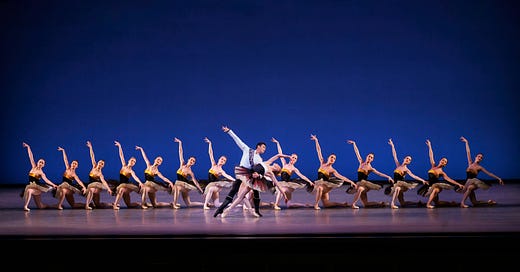



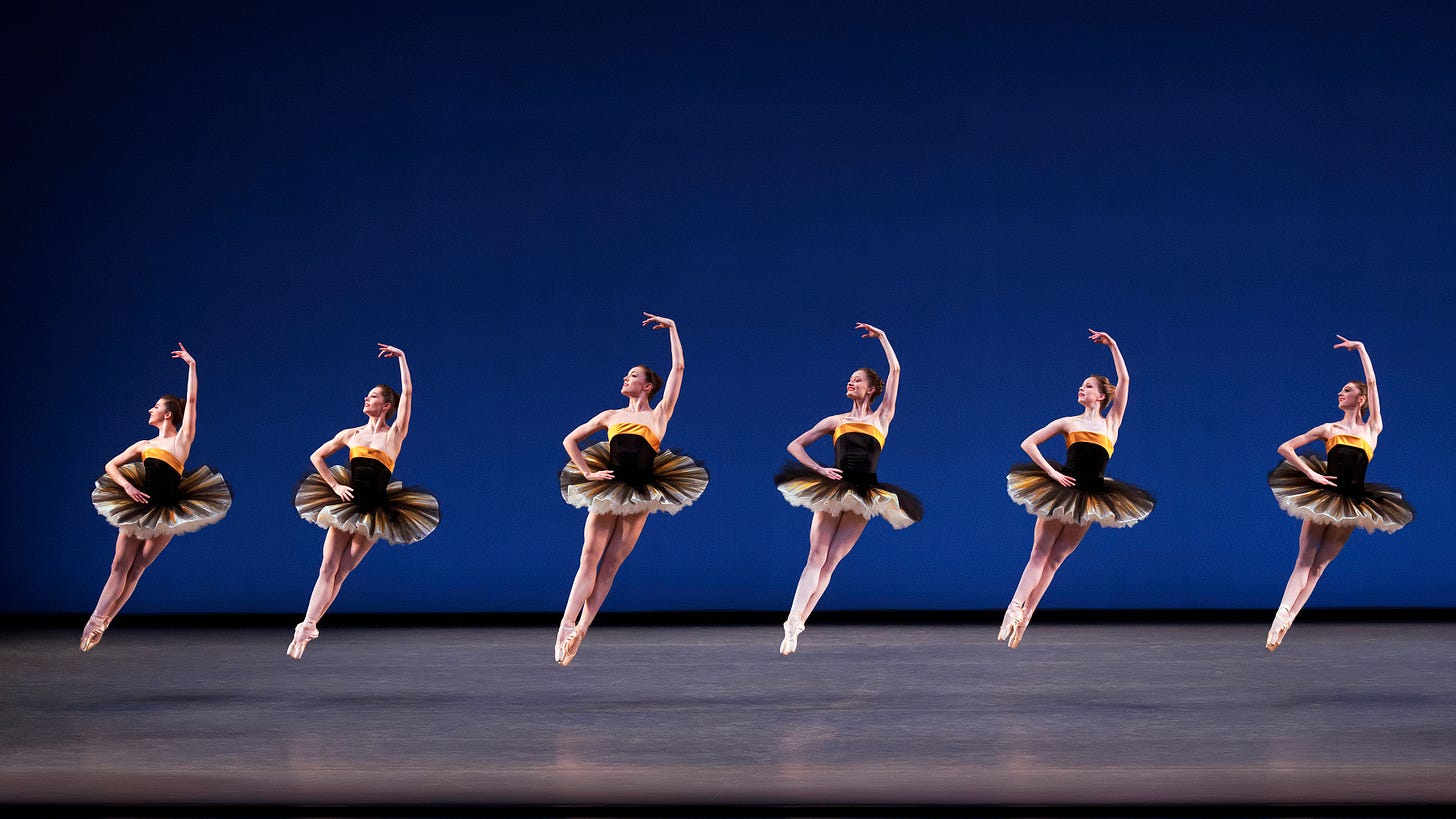

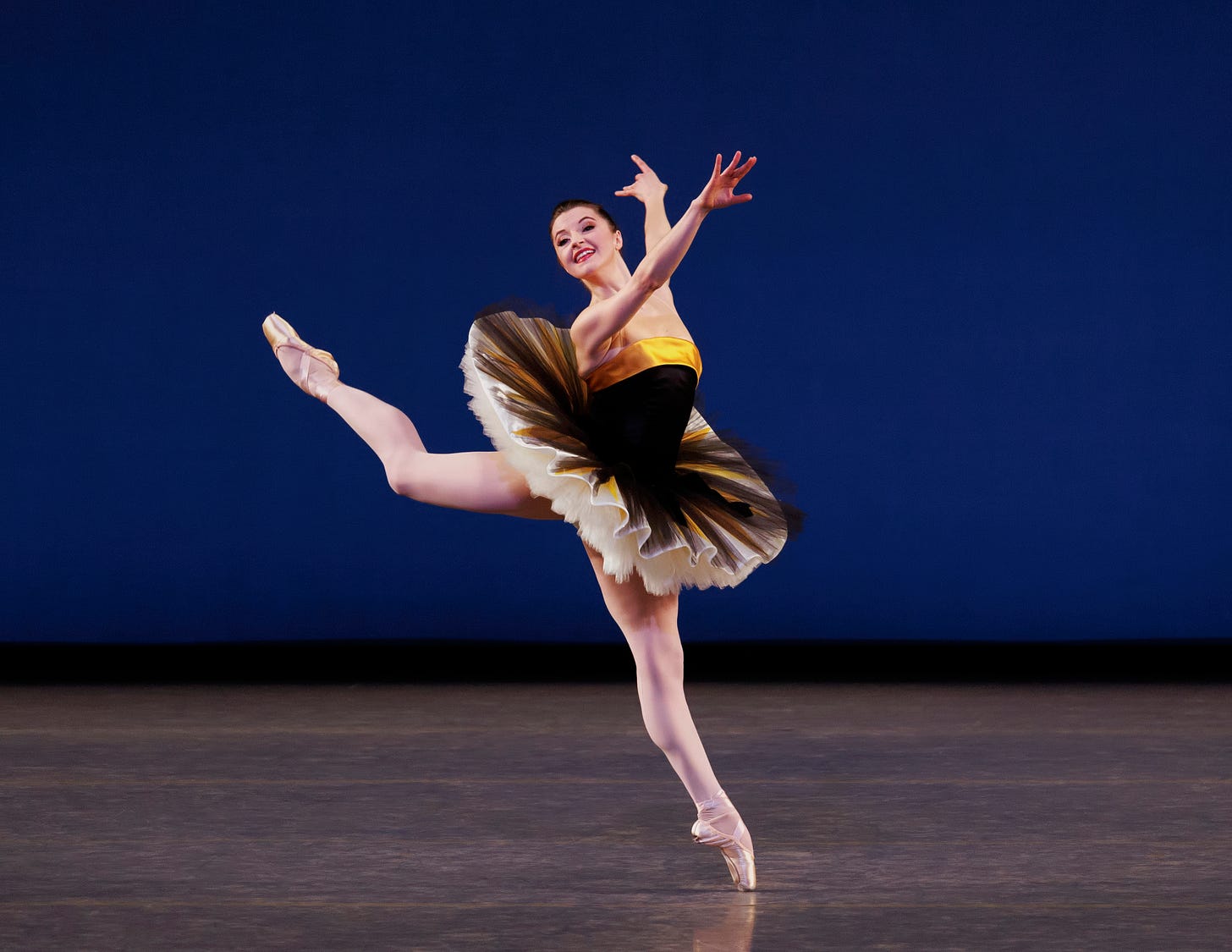
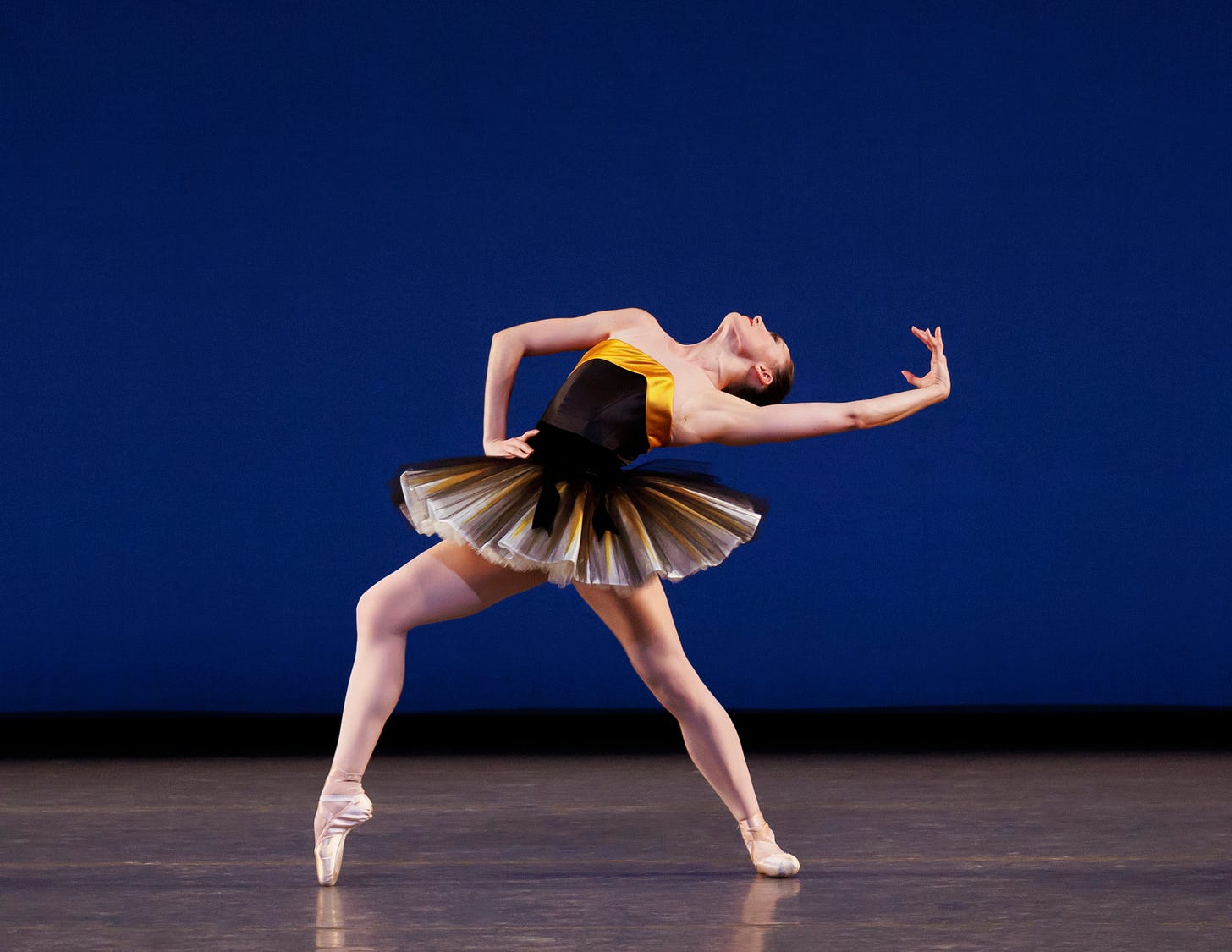
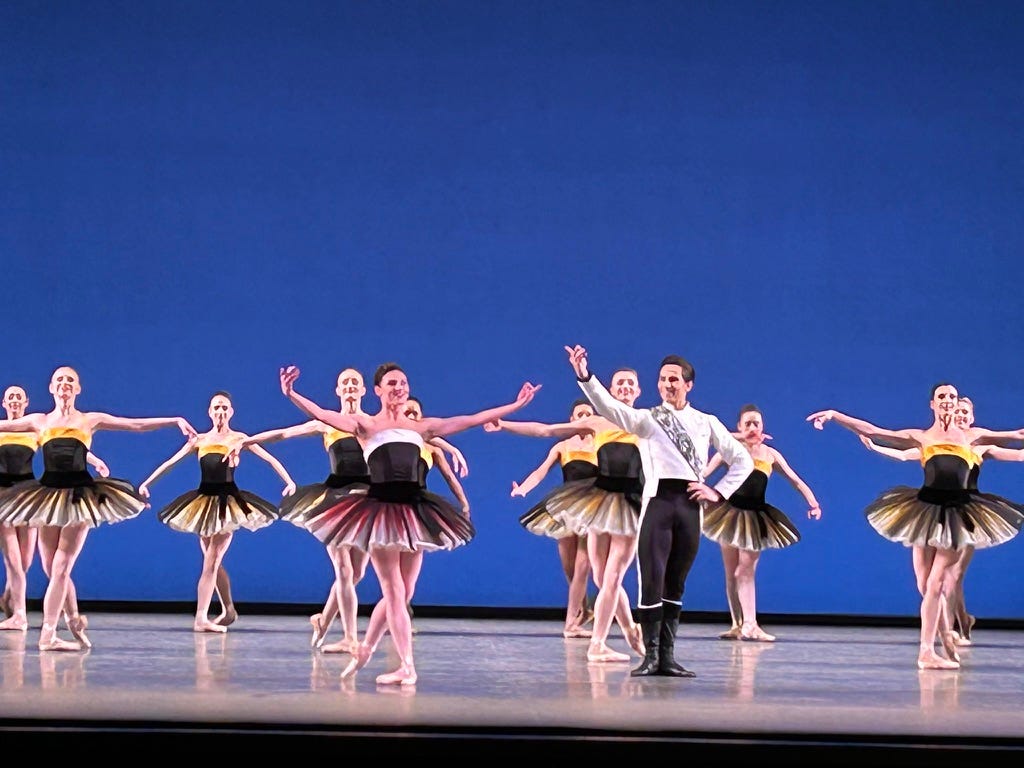
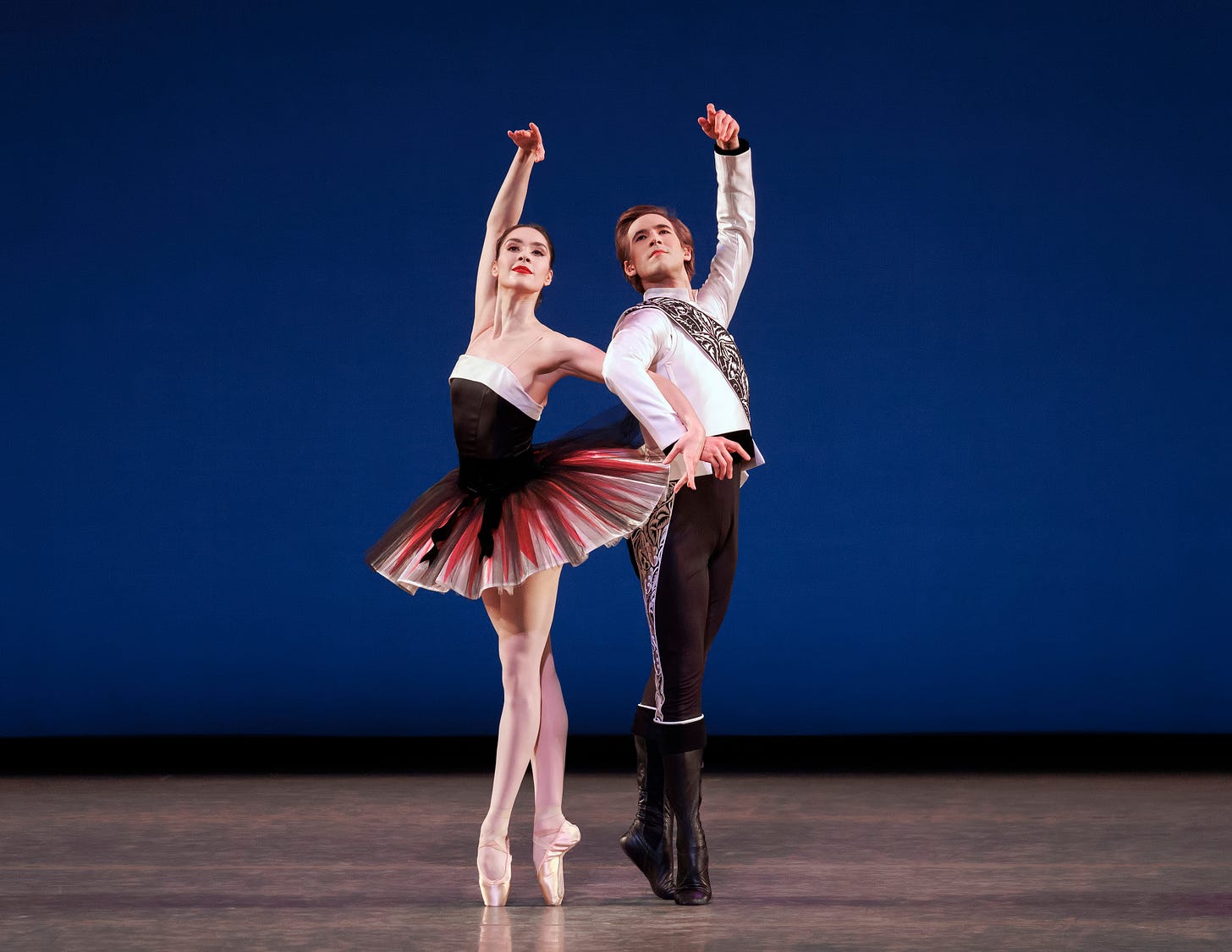
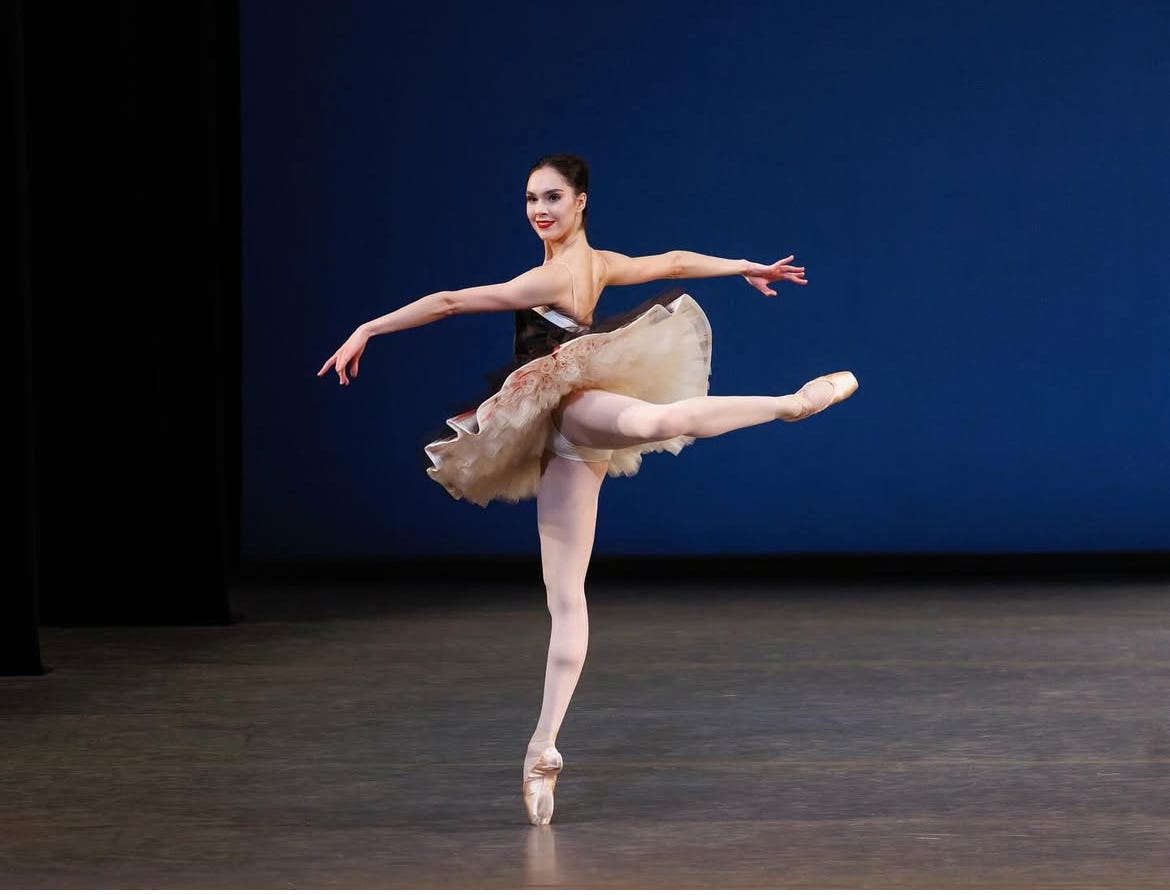
Thank you for sharing your reviews! I love NYCB and I’m so happy to hear about Woodward, Kikta, Nadon, Von Enck and Afanasenkov when I can’t see them in person. Hopefully going to catch a Swan Lake…
I love the Paquita Grand Pas, have danced a version of it as a student and watched it as a mainstay of the Vaganova graduation performances. It's so difficult to capture movement with words but you transported me to several of these iconic phrases of choreo. Thank you! ☺️